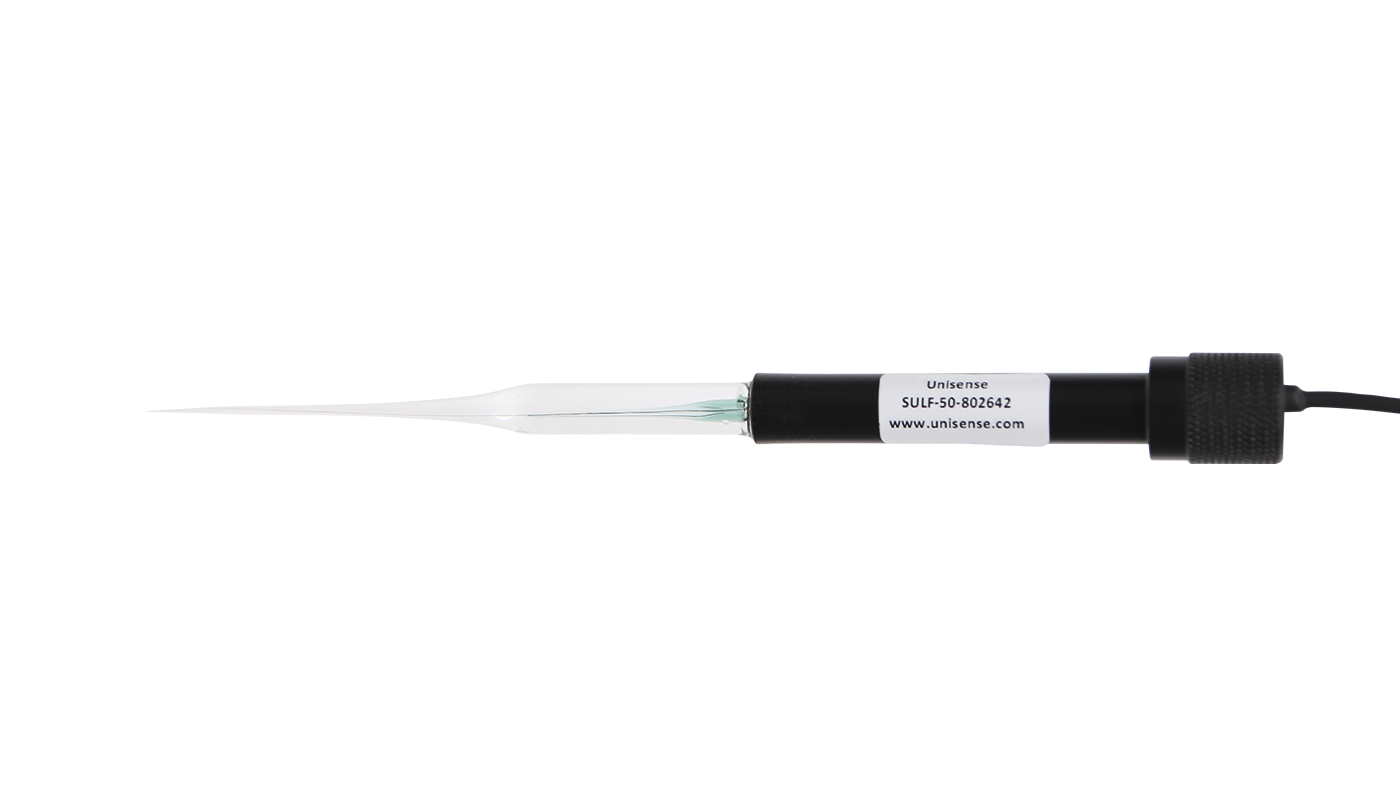
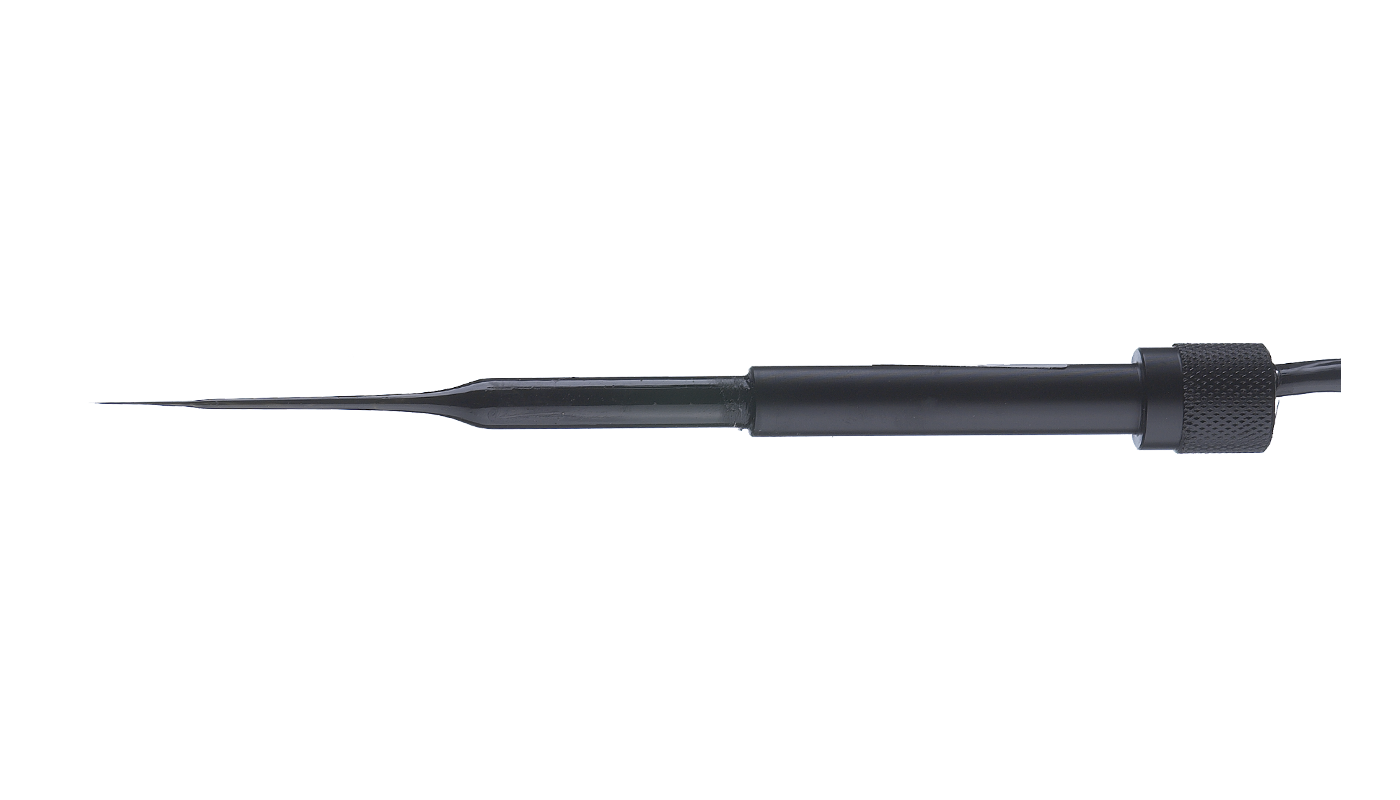
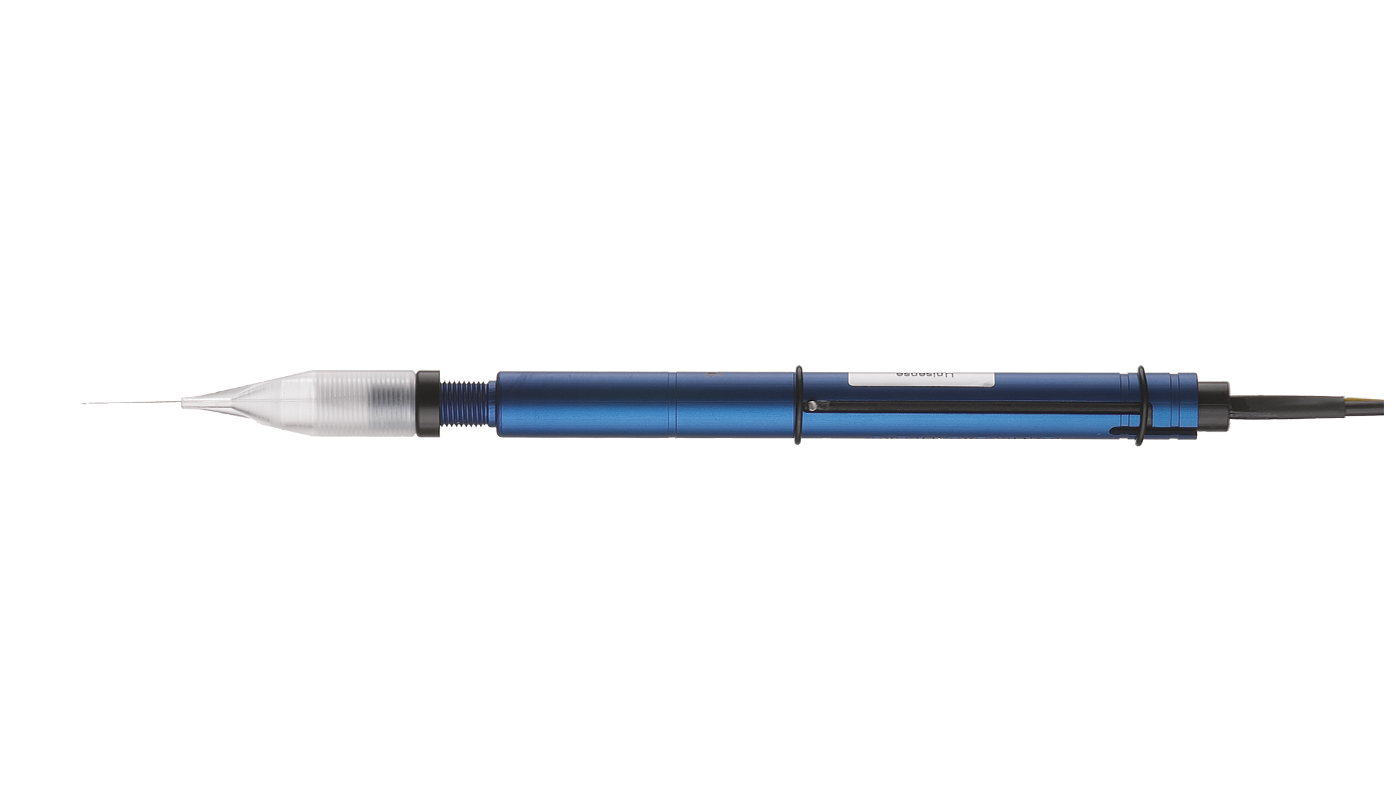
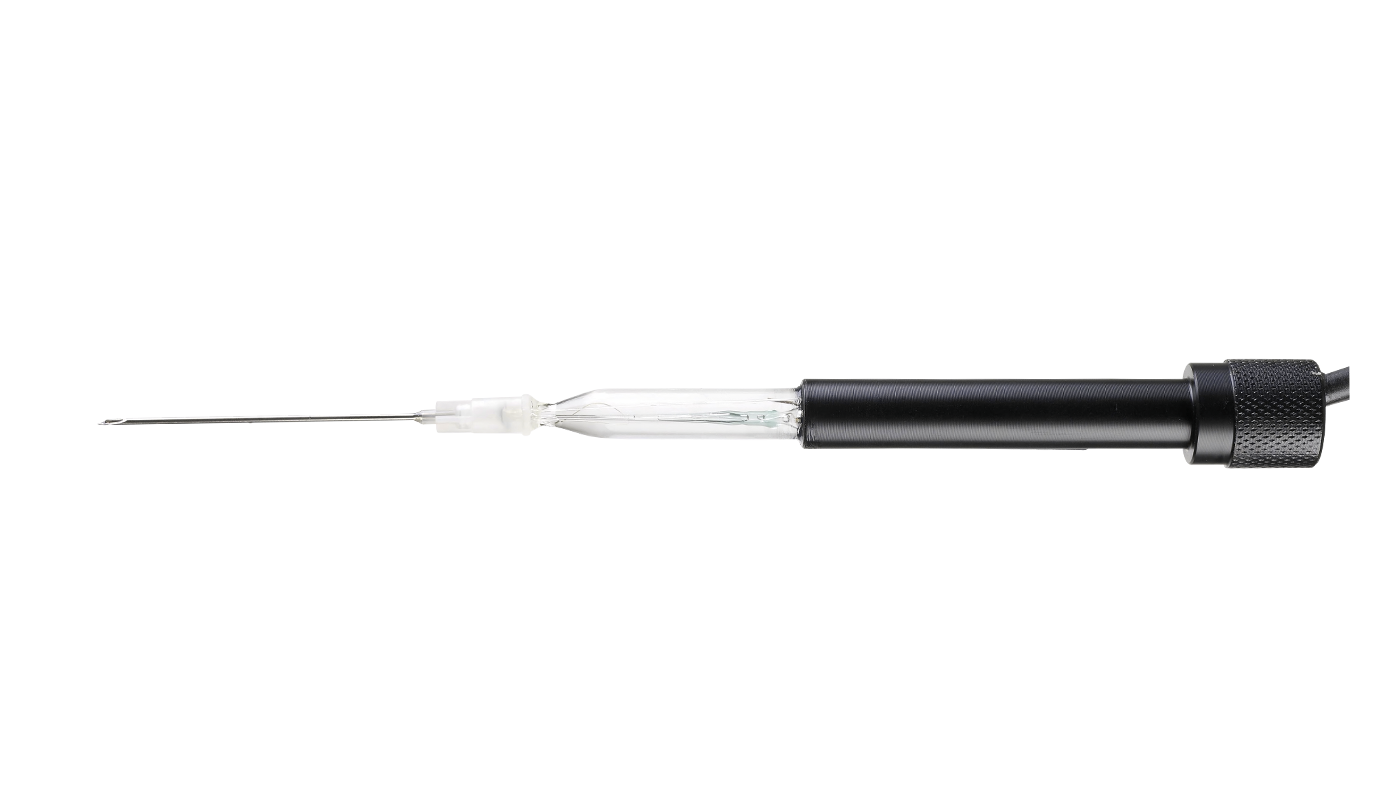
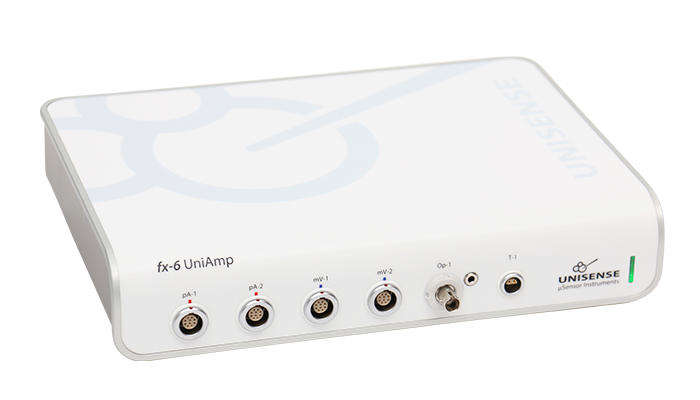
H2S Microsensor
You can choose the H2S microsensor with a tip size down to 10 µm for high spatial resolution of H2S microprofiles, and with a fast response time of down to <10 seconds, you get a reliable tool for studying H2S production and oxidation. Read more...
Two types of H2S microsensors
Unisense offers two types of H2S microsensors with different characteristics, SULF and H2S.
Both types are miniaturized amperometric sensors with a sensing anode polarized against an internal reference. Driven by the external partial pressure, H2S from the environment penetrates through the sensor tip membrane into the electrolyte where the H2S is ultimately oxidised by the anode. This generates a current in the pA range which is measured by a high quality picoammeter, such as the UniAmp Multi Channel.
Read more about the our two different types of H2S microsensors below.
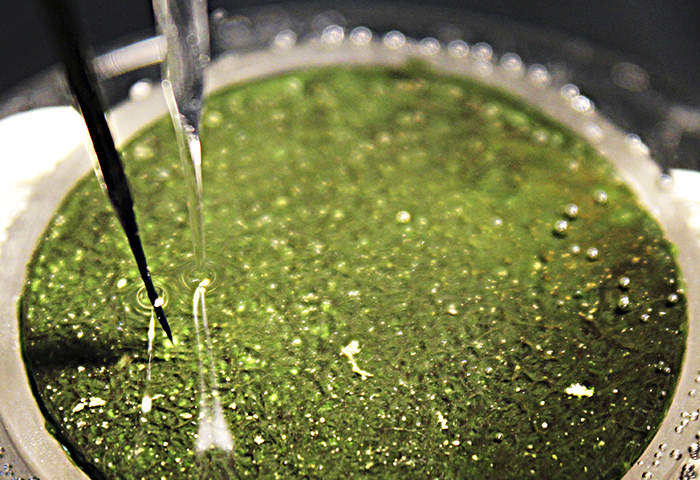
Which H2S sensor should you choose?
Because of the higher signal-to-noise ratio and longer expected lifetime you should choose the type 1 sensor for most environment. However, if you are working with an application where hydrogen is present in significant concentrations, you should choose type 2.
To calculate total sulfide concentrations, you also need to measure the pH in the sample.
Type 1: SULF sensor
In the type 1 sensor (SULF), the signal is generated by oxidation of H2S directly on the anode in the tip of the sensor. The type 1 sensor is sensitive to hydrogen and should not be used in environments with high hydrogen concentrations. However, the type 1 sensor is not sensitive to light, and it has a higher signal-to-noise ratio. Additionally, you get a longer warranty and expected lifetime.
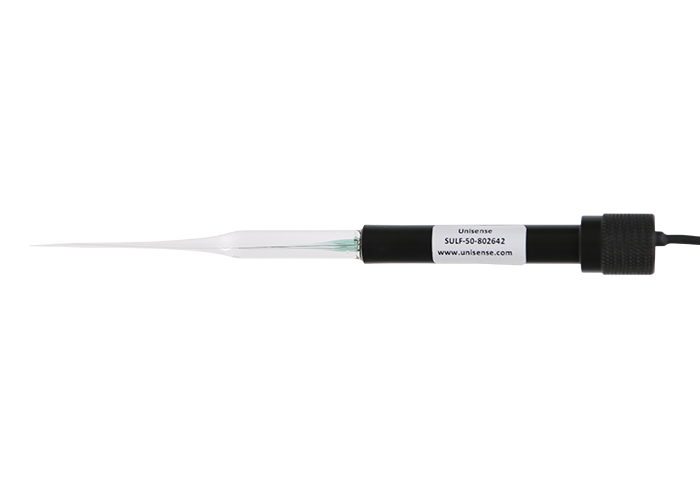
Type 2: H2S sensor
The type 2 (H2S) sensor is a customized sensor for environments containing H2. In the type 2 sensor (H2S-xxx), the H2S enters through the membrane in the tip and is converted to HS- ions in the alkaline electrolyte. This is immediately oxidized by ferricyanide, producing sulfur and ferrocyanide. The sensor signal is generated by re-oxidation of ferrocyanide at the anode in the tip of the sensor (see Jeroschewski et al. 1996). The internal guard electrode facilitates a constant ratio of ferri- to ferrocyanide in the electrolyte, thus minimizing the zero current. The ferri-/ferrocyanide complex is light sensitive and the sensors are coated black to minimize light interference.

Reference
| Feature | Standard | Options | Extra price for option selection |
|---|---|---|---|
|
Feature
Total length
|
Standard
150-200 mm
|
Options
70-350 mm
|
Extra price for option selection
20-50%
|
|
Feature
Diameter 20 mm from tip
|
Standard
< 2 mm
|
Options
< 1 mm
|
Extra price for option selection
10%
|
|
Feature
Diameter 50 mm from tip
|
Standard
8 mm
|
Options
< 2 mm
|
Extra price for option selection
20%
|
|
Feature
Glass shaft diameter
|
Standard
8 mm
|
||
|
Feature
Plastic shaft protection diameter*
|
Standard
11 mm
|
Options
Can be omitted
|
Extra price for option selection
|
*When mounted with in situ mini connectors, the shaft has no protection mounted, but fits directly into the in situ sensor mounts with pressure compensation. In situ sensors have a standard length of 130-160 mm.
| Item | Standard | Options | Extra price for option selection |
|---|---|---|---|
|
Item
Cable
|
Standard
Habia
|
||
|
Item
Cable length
|
Standard
1.5-2 m
|
Options
0-10 m
|
Extra price for option selection
Yes, depends on length
|
|
Item
Connector
|
Standard
LEMO
|
Options
BNC adaptor
|
Extra price for option selection
Yes, order separately
|
|
Item
In situ gold pin connector*
|
Standard
No
|
Options
Yes
|
*When mounted with in situ mini connectors, the shaft has no protection mounted, but fits directly into the in situ sensor mounts with pressure compensation. In situ sensors have a standard length of 130-160 mm.
| Attribute | Standard | Options | Extra price for option selection |
|---|---|---|---|
|
Attribute
Guaranteed lifetime
|
Standard
6 months
|
||
|
Attribute
Expected lifetime
|
Standard
> 1 Year
|
||
|
Attribute
Temperature range
|
Standard
-2-60°C, tip only
|
||
|
Attribute
Temperature coefficient
|
Standard
2-3% per °C
|
||
|
Attribute
Range
|
Standard
About 0-300 µM H2S in water
|
Options
0-10 mM
|
Extra price for option selection
20%
|
|
Attribute
Linear range
|
Standard
About 0-300 µM H2S in water | About 0-10 µM for LR (Low Range) sensors | About 0-1 µM for Ultra LR sensors
|
Options
0-10 mM
|
Extra price for option selection
20%
|
|
Attribute
Detection limit
|
Standard
0.3 µM
|
||
|
Attribute
Detection limit - Low Range sensors (only for tip sizes ≥ 50 µm)
|
Standard
10 nM
|
Options
|
Extra price for option selection
20%
|
|
Attribute
Detection limit - Ultra Low Range sensors (only for tip sizes 200 µm and 500 µm)
|
Standard
2-3 nM
|
Options
|
Extra price for option selection
20%
|
|
Attribute
Internal reference
|
Standard
Yes
|
||
|
Attribute
Waterproof
|
Standard
Yes
|
||
|
Attribute
Pressure tolerant sensing tip
|
Standard
Yes
|
||
|
Attribute
Spatial resolution
|
Standard
Equals outside tip diameter
|
||
|
Attribute
Signal drift
|
Standard
25% per month
|
| Item | Stirring sensitivity | Response time (90%) |
|---|---|---|
|
Item
SULF
|
Stirring sensitivity
<2%
|
Response time (90%)
<10 s | <20 s on Low Range sensors | <60 s on optional 2-3 nM sensors
|
| Feature | Standard | Options | Extra price for option selection |
|---|---|---|---|
|
Feature
Total length
|
Standard
150-200 mm
|
Options
70-350 mm
|
Extra price for option selection
20-50%
|
|
Feature
Diameter 20 mm from tip
|
Standard
< 2 mm
|
Options
< 1 mm
|
Extra price for option selection
10%
|
|
Feature
Diameter 50 mm from tip
|
Standard
8 mm
|
Options
< 2 mm
|
Extra price for option selection
20%
|
|
Feature
Glass shaft diameter
|
Standard
8 mm
|
||
|
Feature
Plastic shaft protection diameter*
|
Standard
11 mm
|
Options
Can be omitted
|
Extra price for option selection
|
*When mounted with in situ mini connectors, the shaft has no protection mounted, but fits directly into the in situ sensor mounts with pressure compensation. In situ sensors have a standard length of 130-160 mm.
| Item | Standard | Options | Extra price for option selection |
|---|---|---|---|
|
Item
Cable
|
Standard
Habia
|
||
|
Item
Cable length
|
Standard
1.5-2 m
|
Options
0-10 m
|
Extra price for option selection
Yes, depends on length
|
|
Item
Connector
|
Standard
LEMO
|
Options
BNC adaptor
|
Extra price for option selection
Yes, order separately
|
|
Item
In situ gold pin connector*
|
Standard
No
|
Options
Yes
|
*When mounted with in situ mini connectors, the shaft has no protection mounted, but fits directly into the in situ sensor mounts with pressure compensation. In situ sensors have a standard length of 130-160 mm.
| Attribute | Standard | Options | Extra price for option selection |
|---|---|---|---|
|
Attribute
Guaranteed lifetime
|
Standard
3 months
|
||
|
Attribute
Expected lifetime
|
Standard
> 6 months
|
||
|
Attribute
Temperature range
|
Standard
-2-60°C
|
||
|
Attribute
Range
|
Standard
About 0-1 mM H2S in water
|
Options
0-50 mM
|
Extra price for option selection
20%
|
|
Attribute
Linear range
|
Standard
About 0-300 µM H2S in water | About 0-100 µM for LR (Low Range) sensors
|
Options
0-20 mM
|
Extra price for option selection
20%
|
|
Attribute
Detection limit
|
Standard
0.3 µM | 30 nM for H2S-50LR | 20 nM for H2S-100/500/NP LR
|
||
|
Attribute
Internal reference
|
Standard
Yes
|
||
|
Attribute
Internal guard
|
Standard
Yes
|
||
|
Attribute
Waterproof
|
Standard
Yes
|
||
|
Attribute
Spatial resolution
|
Standard
Equals outside tip diameter
|
||
|
Attribute
Signal drift
|
Standard
50% per month
|
| Item | Stirring sensitivity | Response time (90%) |
|---|---|---|
|
Item
H2S
|
Stirring sensitivity
<2%
|
Response time (90%)
<10 s
|
|
Item
H2S-500 and FT-cell
|
Stirring sensitivity
<2%
|
Response time (90%)
<20 s
|
| Name | Formula | Interference for gases in gas phase (%) | Interference for gases dissolved in water (%) |
|---|---|---|---|
|
Name
Methane
|
Formula
CH4
|
Interference for gases in gas phase (%)
0*
|
Interference for gases dissolved in water (%)
0**
|
|
Name
Carbon dioxide
|
Formula
CO2
|
Interference for gases in gas phase (%)
0
|
Interference for gases dissolved in water (%)
0
|
|
Name
Nitrogen
|
Formula
N2
|
Interference for gases in gas phase (%)
0
|
Interference for gases dissolved in water (%)
0
|
|
Name
Oxygen
|
Formula
O2
|
Interference for gases in gas phase (%)
0
|
Interference for gases dissolved in water (%)
0
|
|
Name
Air
|
Formula
O2, N2, Ar
|
Interference for gases in gas phase (%)
0
|
Interference for gases dissolved in water (%)
0
|
|
Name
Nitrous oxide
|
Formula
N2O
|
Interference for gases in gas phase (%)
0
|
Interference for gases dissolved in water (%)
0
|
|
Name
Ammonia
|
Formula
NH3
|
Interference for gases in gas phase (%)
0
|
Interference for gases dissolved in water (%)
0
|
|
Name
Hydrogen
|
Formula
H2
|
Interference for gases in gas phase (%)
0.8
|
Interference for gases dissolved in water (%)
96
|
|
Name
Carbon monoxide
|
Formula
CO
|
Interference for gases in gas phase (%)
0.6
|
Interference for gases dissolved in water (%)
77
|
|
Name
Dimethyl sulfide
|
Formula
(CH3)2S
|
Interference for gases in gas phase (%)
18
|
Interference for gases dissolved in water (%)
18
|
|
Name
Methyl mercaptan
|
Formula
CH3SH
|
Interference for gases in gas phase (%)
174
|
Interference for gases dissolved in water (%)
44
|
|
Name
Ethyl mercaptan
|
Formula
C2H6S
|
Interference for gases in gas phase (%)
13
|
Interference for gases dissolved in water (%)
14
|
|
Name
Sulfur dioxide
|
Formula
SO2
|
Interference for gases in gas phase (%)
40
|
Interference for gases dissolved in water (%)
1
|
*Given as signal for the interfering species in % of H₂S signal at equal partial pressures
**Given as signal for the interfering species in % of H₂S signal at equal molar concentrations
| Name | Formula | Interference for gases in gas phase (%) | Interference for gases dissolved in water (%) |
|---|---|---|---|
|
Name
Methane
|
Formula
CH4
|
Interference for gases in gas phase (%)
0*
|
Interference for gases dissolved in water (%)
0**
|
|
Name
Carbon dioxide
|
Formula
CO2
|
Interference for gases in gas phase (%)
0
|
Interference for gases dissolved in water (%)
0
|
|
Name
Nitrogen
|
Formula
N2
|
Interference for gases in gas phase (%)
0
|
Interference for gases dissolved in water (%)
0
|
|
Name
Oxygen
|
Formula
O2
|
Interference for gases in gas phase (%)
0
|
Interference for gases dissolved in water (%)
0
|
|
Name
Air
|
Formula
O2, N2, Ar
|
Interference for gases in gas phase (%)
0
|
Interference for gases dissolved in water (%)
0
|
|
Name
Nitrous oxide
|
Formula
N2O
|
Interference for gases in gas phase (%)
0
|
Interference for gases dissolved in water (%)
0
|
|
Name
Ammonia
|
Formula
NH3
|
Interference for gases in gas phase (%)
0
|
Interference for gases dissolved in water (%)
0
|
|
Name
Hydrogen
|
Formula
H2
|
Interference for gases in gas phase (%)
0.03
|
Interference for gases dissolved in water (%)
4
|
|
Name
Carbon monoxide
|
Formula
CO
|
Interference for gases in gas phase (%)
4
|
Interference for gases dissolved in water (%)
487
|
|
Name
Dimethyl sulfide
|
Formula
(CH3)2S
|
Interference for gases in gas phase (%)
3
|
Interference for gases dissolved in water (%)
3
|
|
Name
Methyl mercaptan
|
Formula
CH3SH
|
Interference for gases in gas phase (%)
117
|
Interference for gases dissolved in water (%)
30
|
|
Name
Ethyl mercaptan
|
Formula
C2H6S
|
Interference for gases in gas phase (%)
8
|
Interference for gases dissolved in water (%)
9
|
|
Name
Sulfur dioxide
|
Formula
SO2
|
Interference for gases in gas phase (%)
34
|
Interference for gases dissolved in water (%)
1
|
*Given as signal for the interfering species in % of H₂S signal at equal partial pressures
**Given as signal for the interfering species in % of H₂S signal at equal molar concentrations
| Type 1: SULF | Size and description | Options | Extra price for option selection |
|---|---|---|---|
|
Type 1: SULF
SULF-10
|
Size and description
8-12 µm - glass sensor
|
Options
3-5 µm
|
Extra price for option selection
20%
|
|
Type 1: SULF
SULF-25
|
Size and description
20-30 µm - glass sensor
|
||
|
Type 1: SULF
SULF-50
|
Size and description
40-60 µm - glass sensor
|
||
|
Type 1: SULF
SULF-100
|
Size and description
90-110 µm - glass sensor
|
||
|
Type 1: SULF
SULF-200
|
Size and description
175-225 µm - glass sensor
|
||
|
Type 1: SULF
SULF-500
|
Size and description
400-600 µm - glass sensor
|
||
|
Type 1: SULF
SULF-Eddy
|
Size and description
40-60 µm - for Eddy Correlation System
|
||
|
Type 1: SULF
SULF-50LR
|
Size and description
40-60 µm - low range
|
||
|
Type 1: SULF
SULF-100LR
|
Size and description
90-110 µm - low range
|
||
|
Type 1: SULF
SULF-500LR
|
Size and description
400-600 µm - low range
|
||
|
Type 1: SULF
SULF-MR
|
Size and description
400-600 µm - in guide
|
Options
100-400, 600-800 µm
|
Extra price for option selection
20%
|
|
Type 1: SULF
SULF-N
|
Size and description
1.1 x 40 mm - needle sensor
|
||
|
Type 1: SULF
SULF-NP
|
Size and description
1.6 x 40 mm - needle sensor for piercing
|
||
|
Type 1: SULF
SULF-NPLR
|
Size and description
1.6 x 40 mm - needle sensor for piercing - low range
|
||
|
Type 1: SULF
SULF-ST-1/4
|
Size and description
1/4'' steel tube
|
||
|
Type 1: SULF
SULF-SL-1/4
|
Size and description
FT-cell 1/4'' Swagelok Tee
|
||
|
Type 1: SULF
SULF-SL-1/8
|
Size and description
FT-cell 1/8'' Swagelok Tee
|
||
|
Type 1: SULF
SULF-PEEK-1/8
|
Size and description
FT-cell 1/8'' PEEK Tee
|
||
|
Type 1: SULF
SULF-PEEK-1/16
|
Size and description
FT-cell 1/16'' PEEK Tee
|
||
|
Type 1: SULF
SULF-FT-GLASS-6
|
Size and description
Glass FT-cell 6mm outer diameter
|
||
|
Type 1: SULF
SULF-FT-GLASS-8
|
Size and description
Glass FT-cell 8mm outer diameter
|
| Type 2: H2S | Size and description | Options | Extra price for option selection |
|---|---|---|---|
|
Type 2: H2S
H2S-10
|
Size and description
8-12 µm - glass sensor
|
Options
3-5 µm
|
Extra price for option selection
20%
|
|
Type 2: H2S
H2S-25
|
Size and description
20-30 µm - glass sensor
|
||
|
Type 2: H2S
H2S-50
|
Size and description
40-60 µm - glass sensor
|
||
|
Type 2: H2S
H2S-100
|
Size and description
90-110 µm - glass sensor
|
||
|
Type 2: H2S
H2S-200
|
Size and description
175-225 µm - glass sensor
|
||
|
Type 2: H2S
H2S-500
|
Size and description
400-600 µm - glass sensor
|
||
|
Type 2: H2S
H2S-Eddy
|
Size and description
40-60 µm - for Eddy Correlation System
|
||
|
Type 2: H2S
H2S-50LR
|
Size and description
40-60 µm - low range
|
||
|
Type 2: H2S
H2S-100LR
|
Size and description
90-110 µm - low range
|
||
|
Type 2: H2S
H2S-500LR
|
Size and description
400-600 µm - low range
|
||
|
Type 2: H2S
H2S-MR
|
Size and description
400-600 µm - in guide
|
Options
100-400, 600-800 µm
|
Extra price for option selection
20%
|
|
Type 2: H2S
H2S-N
|
Size and description
1.1 x 40 mm - needle sensor
|
||
|
Type 2: H2S
H2S-NP
|
Size and description
1.6 x 40 mm - needle sensor for piercing
|
||
|
Type 2: H2S
H2S-NPLR
|
Size and description
1.6 x 40 mm - needle sensor for piercing - low range
|
||
|
Type 2: H2S
H2S-ST-1/4
|
Size and description
1/4'' steel tube
|
||
|
Type 2: H2S
H2S-SL-1/4
|
Size and description
FT-cell 1/4'' Swagelok Tee
|
||
|
Type 2: H2S
H2S-SL-1/8
|
Size and description
FT-cell 1/8'' Swagelok Tee
|
||
|
Type 2: H2S
H2S-PEEK-1/8
|
Size and description
FT-cell 1/8'' PEEK Tee
|
||
|
Type 2: H2S
H2S-PEEK-1/16
|
Size and description
FT-cell 1/16'' PEEK Tee
|
||
|
Type 2: H2S
H2S-FT-GLASS-6
|
Size and description
Glass FT-cell 6mm outer diameter
|
||
|
Type 2: H2S
H2S-FT-GLASS-8
|
Size and description
Glass FT-cell 8mm outer diameter
|
Video Guides

We look into how SULF sensors are made, how they work, their specifications, and possible customizations.

Learn when to choose H2S over SULF, the applications as well as specifications and customizations.

Application Scientist Tage Dalsgaard shows you how to perform a 2-point calibration with H2S free water and one known H2S concentration
Quick Enquiry
Related products
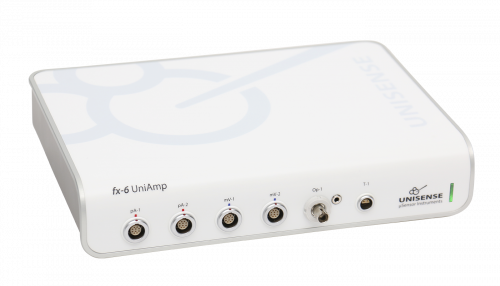
UniAmp Multi Channel for all Unisense sensors and electrodes including optical sensors
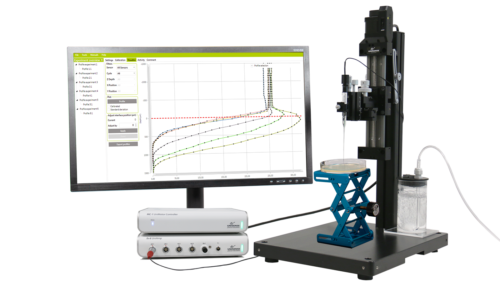
Microprofiles with extreme accuracy, high spatial and temporal resolution
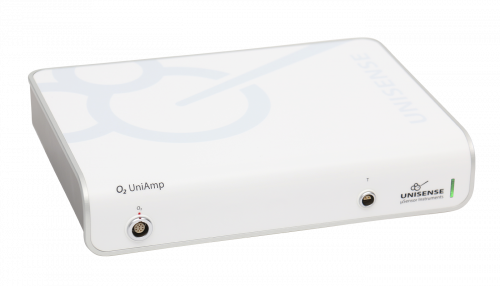
Economic amplifier portfolio for single analytes - O2, pH/mV, H2, N2O or H2S
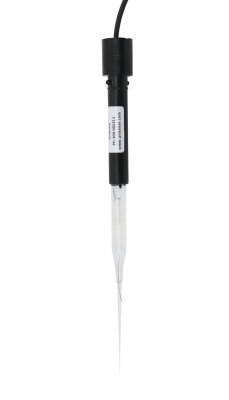
Miniaturized pH electrode
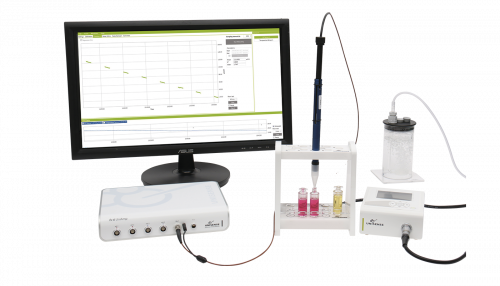
Sealed system to measure O2, H2, H2S, N2O, NO, pH, Redox, and temperature metabolism
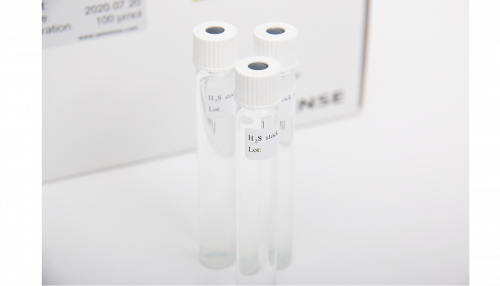
Easy and cost-effective calibration of H2S and SULF microsensors
Applications
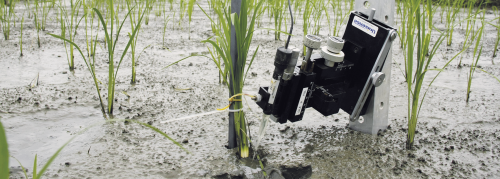
Learn in the laboratory - explore and confirm in the field!
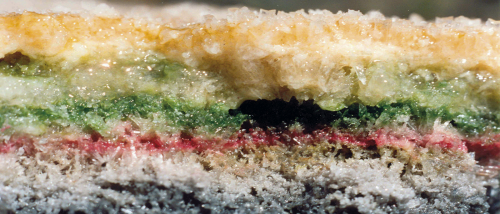
Needle sensors used for profiles in salt crusts.
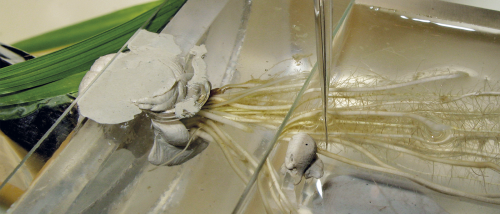
Study plant root microenvironment
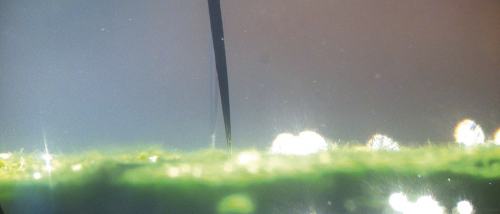
O2, H2S and pH microprofiles in biofilm
